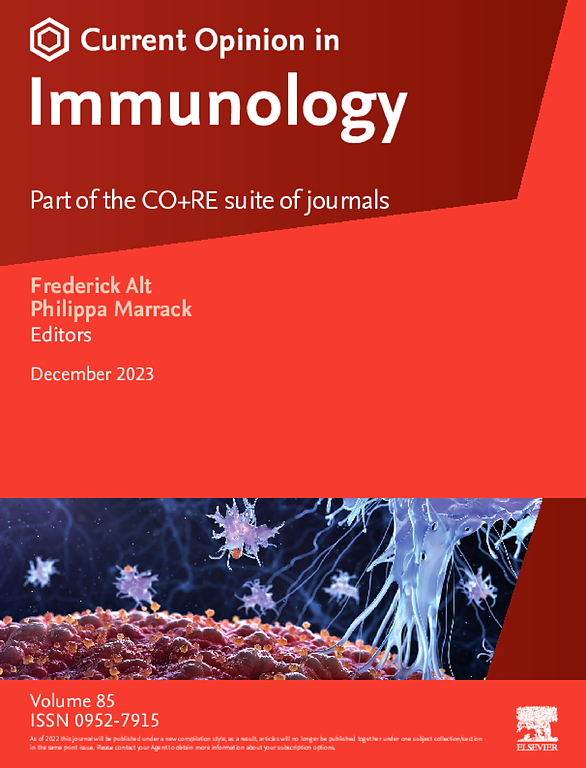B cell memory of Immunoglobulin E (IgE) antibody responses in allergy
IF 6.6
2区 医学
Q1 IMMUNOLOGY
引用次数: 0
Abstract
Immunoglobulin E (IgE)-mediated allergic diseases are driven by high-affinity allergen-specific IgE antibodies. IgE antibodies bind to Fc epsilon receptors on mast cells, prompting their degranulation and initiating inflammatory reactions upon allergen crosslinking. While most IgE-producing plasma cells have short lifespans, and IgE memory B cells are exceedingly rare, studies have indicated that non-IgE-expressing type 2–polarized IgG memory B cells serve as a reservoir of IgE memory in allergies. This review explores the B cell populations underlying IgE-mediated allergies, including the cellular and molecular processes that drive IgE class switching from non-IgE memory B cells. It highlights emerging evidence from human studies identifying type 2 IgG memory B cells as the source of pathogenic IgE in allergic responses.
过敏症中免疫球蛋白 E (IgE) 抗体反应的 B 细胞记忆
免疫球蛋白 E(IgE)介导的过敏性疾病是由高亲和力的过敏原特异性 IgE 抗体引起的。IgE 抗体与肥大细胞上的 Fc epsilon 受体结合,促使肥大细胞脱颗粒,并在过敏原交联后引发炎症反应。虽然大多数产生 IgE 的浆细胞寿命很短,IgE 记忆 B 细胞也极为罕见,但研究表明,非 IgE 表达的 2 型极化 IgG 记忆 B 细胞是过敏症中的 IgE 记忆库。本综述探讨了 IgE 介导的过敏症的基础 B 细胞群,包括驱动非 IgE 记忆 B 细胞 IgE 类别转换的细胞和分子过程。它强调了人类研究中新出现的证据,即 2 型 IgG 记忆 B 细胞是过敏反应中致病性 IgE 的来源。
本文章由计算机程序翻译,如有差异,请以英文原文为准。
求助全文
约1分钟内获得全文
求助全文
来源期刊
CiteScore
13.30
自引率
1.40%
发文量
94
审稿时长
67 days
期刊介绍:
Current Opinion in Immunology aims to stimulate scientifically grounded, interdisciplinary, multi-scale debate and exchange of ideas. It contains polished, concise and timely reviews and opinions, with particular emphasis on those articles published in the past two years. In addition to describing recent trends, the authors are encouraged to give their subjective opinion of the topics discussed.
In Current Opinion in Immunology we help the reader by providing in a systematic manner: 1. The views of experts on current advances in their field in a clear and readable form. 2. Evaluations of the most interesting papers, annotated by experts, from the great wealth of original publications.
Current Opinion in Immunology will serve as an invaluable source of information for researchers, lecturers, teachers, professionals, policy makers and students.
Current Opinion in Immunology builds on Elsevier''s reputation for excellence in scientific publishing and long-standing commitment to communicating reproducible biomedical research targeted at improving human health. It is a companion to the new Gold Open Access journal Current Research in Immunology and is part of the Current Opinion and Research(CO+RE) suite of journals. All CO+RE journals leverage the Current Opinion legacy-of editorial excellence, high-impact, and global reach-to ensure they are a widely read resource that is integral to scientists'' workflow.

 求助内容:
求助内容: 应助结果提醒方式:
应助结果提醒方式:


